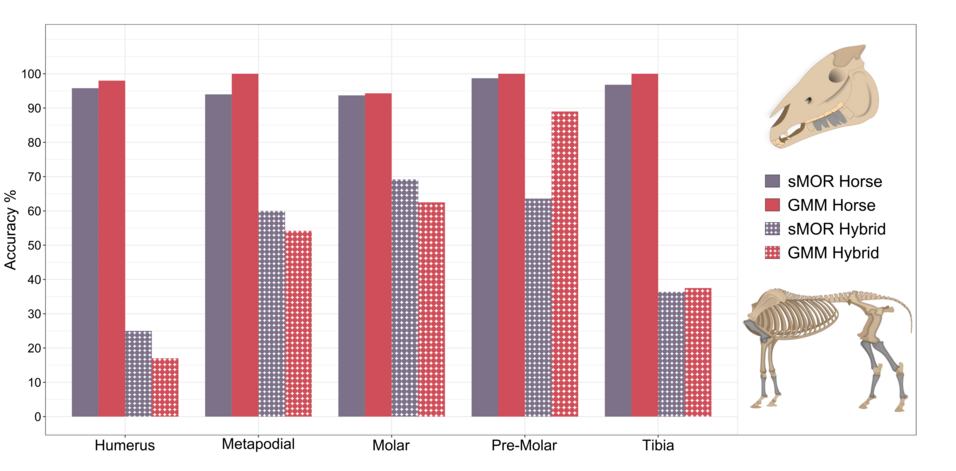Abstract
Hybrids of horse and donkey, which have been valued in the Mediterranean basin since the Iron Age, became integrated into the animal world north of the Alps in the course of Romanization. Until now, however, their true contribution to the economic and military life in the northern Roman provinces Raetia, Noricum and Upper Pannonia (southern Germany, eastern Switzerland and Austria) has remained unknown in the absence of robust identification methods based on morphometric approaches. We confronted morphological identification of 405 equid specimens collected in the Late Iron Age (Celtic) (∼2nd – 1st century (c.) BCE) and Roman (∼1st – 5th c. CE) archaeological contexts with their ancient DNA signatures. Our multi-method study demonstrates that although ancient DNA and morphological approaches (including standard osteomorphology and geometric morphometrics) provide overall >85% matching results, in the case of hybrid animals, the extent of overlap with ancient DNA drops to ≤52%. Out of five skeletal elements studied here (mandibular premolars and molars, metapodials, humeri and tibiae), only premolar mandibular teeth (P3, P4) provide good enough accuracy in hybrid classification (89%) based on geometric morphometrics, making it the preferred element and method in future zooarchaeological studies, when ancient DNA data is not available. Moreover, our data show that, although not yet present in the preceding Iron Age, one in six equids in Roman times is a mule, suggesting a strong Mediterranean influence on the use of equids in daily life north of the Alps.
More about the article
Sharif, M. B., Mohaseb, A. F., Zimmermann, M. I., Trixl, S., Saliari, K., Kunst, G. K., ... & Mohandesan, E. (2022). Ancient DNA refines taxonomic classification of Roman equids north of the Alps, elaborated with osteomorphology and geometric morphometrics. Journal of Archaeological Science, 143, 105624.
Click here to get the full paper

